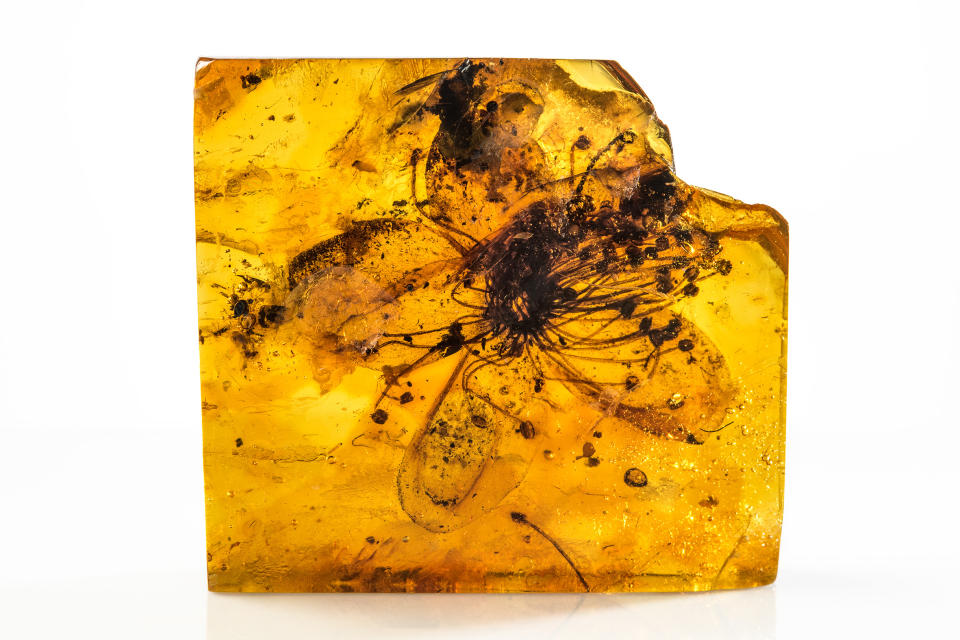Flower trapped in amber for 34 million years is ‘extraordinary and beautiful’
The largest known flower fossil to be preserved in amber, thought to be at least 34 million years old, has been described by scientists as “extraordinary and beautiful”.
Measuring nearly 3cm wide, the flower is about three times the size of other preserved blooms.
It comes from an evergreen plant originally called Stewartia Kowalewskii and was discovered in the Baltic forests of northern Europe.
The experts said their work, published in the journal Scientific Reports, gives a valuable insight into past life and climate as well as the evolution of forests.
Dr Eva-Maria Sadowski, of the Museum fur Naturkunde in Berlin and first author on the study, said: “Our new findings about this extraordinary and beautiful flower inclusion are additional puzzle pieces that allow us to decipher the flora of the Baltic amber forest and to understand the climate of the past.
“This new knowledge helps us to gain deeper insights into the forests of Earth’s history and to understand their evolution in time and space.”
The Baltic region is home to the largest known deposit of amber, called Baltic amber, produced sometime during the Eocene epoch 56 to 33.9 million years ago.
These forests produced more than 100,000 tonnes of amber, it is estimated.
Dr Sadowski and her colleague Christa-Charlotte Hofmann, of the University of Vienna, reanalysed the flower, which was first described and named in 1872.
They believe it was enclosed in amber somewhere between 38 to 34 million years ago.
Being trapped in amber allowed the bloom to act like a time capsule – with its petals, stem and pollen preserved in detail.
Pollen grains encased in amber were released by the stamen – the flower’s male reproductive part.
Dr Sadowski said: “It is very exceptional to find such a large flower in amber, with the stamens at the perfect point of being just open to release their pollen while the flower was retained by resin.”

The authors extracted pollen from the sample and examined it under an electron microscope.
Analysis suggests the flower is closely related to a class of Asian plants known as Symplocos.
Based on this, the researchers have proposed a new name for the flower – Symplocos Kowalewskii, as opposed to Stewartia, a genus belonging to the tea family.
They said this is the first fossil record of a Symplocos plant in the Baltic amber.
But, they added, there is evidence the forest was home to numerous plant species with modern relatives in East and South East Asia.
This is because during that time, the climate in Europe was warmer and rainfall was more common, which allowed members of the beech family, such as chinkapin, and conifers, such as the Japanese cedar, to thrive.
Together they formed a diverse ecosystem composed of coastal swamps, mires and mixed forest, the researchers said.

 Yahoo News
Yahoo News 
